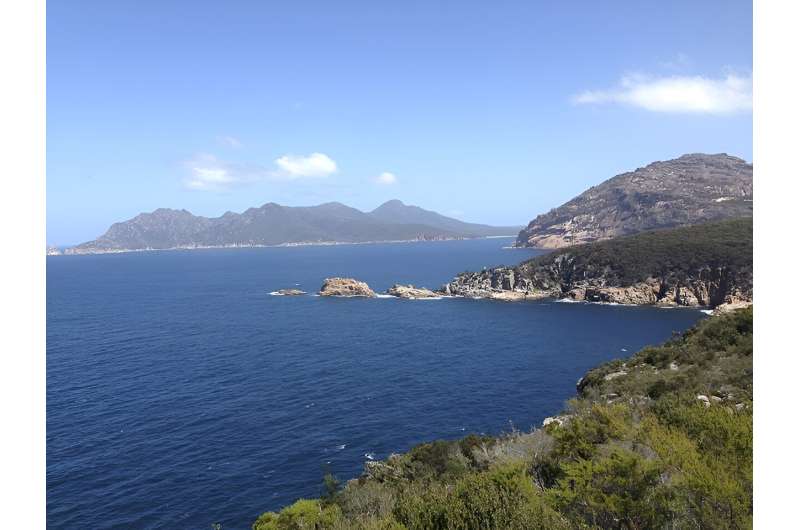This article has been reviewed according to Science X's editorial process and policies. Editors have highlighted the following attributes while ensuring the content's credibility:
fact-checked
trusted source
written by researcher(s)
proofread
Flipping Indigenous regional development in Newfoundland upside-down: Lessons from Australia

In an era of "global boiling" the Canadian government has set ambitious targets to transition towards a net-zero future with important caveats that this transition must be fair and inclusive.
However, does this future include vibrant, self-determined Indigenous communities? Research shows that inadequate engagement between settler governments, corporations and Indigenous communities leads to poor indications of reconciliation.
This is a troubling reality given the ongoing socio-economic challenges imposed on Indigenous communities across the land now called Canada.
Risk and uncertainty
Everywhere in Canada has unique, and equally important, developmental considerations and climate risks.
For regional Ktaqmkuk (Newfoundland) Mi'kmaw communities in Nujio'qonik, (the St. George's Bay region), the uncertainty of the future is complicated by large-scale, natural resource developments.
A clear example of one such development is Project Nujio'qonik, billed as the world's first large-scale green hydrogen project in western Newfoundland and Labrador.
Mi'kmaw communities and leaders, such as Elder Calvin White, led the movement for recognition of the Mi'kmaq in Ktaqmkuk post-Confederation, and continue to do so today.
However, the controversial establishment of the Qalipu Mi'kmaq First Nation has hampered efforts by Mi'kmaw across the west coast of Ktaqmkuk to fully realize effective stewardship and control over decisions impacting communities and surrounding territories.
The complexities behind the establishment of the Qalipu Mi'kmaq First Nation continue to be challenged in court and families remain divided to this day.
While the situation may seem intractable there are surprising insights to be gained from the experiences of Indigenous groups halfway around the world.
18,000 km away
Despite being geographically poles apart, both Newfoundland and Tasmania have been described by locals and scholars as "mirror islands" with striking linkages and similarities throughout history.
Indigenous groups in both regions have fought for decades to assert their rights and agency on traditional territory and continue to push back against a shared history of erasure and extinction myths.
Inequalities continue to facilitate patterns of uneven growth and opportunity with real impacts upon local communities.
In response to growing concerns for the future of their communities Mi'kmaw leaders Chief Joanne Miles of the Flat Bay Band and Chief Peggy White of the Three Rivers Mi'kmaq Band traveled to Tasmania with Ph.D. candidate Brady Reid.
The goal of the trip was to share knowledge and learn about advances in sustainable and culturally-grounded economic development projects within Australia.
The exchange took place between Nov. 4–16, 2023 in Hobart, the capital city of Tasmania, with some excursions to various locations around the southern part of the island.
At the invite of local Indigenous leaders, Professor Emma Lee of the National Center for Reconciliation, Truth, and Justice at Federation University and Uncle Rodney Dillon of the Land and Sea Aboriginal Corporation—among others—shared Indigenous regional development and recognition initiatives.
Shared lessons
Recognizing, renewing and supporting Indigenous management and stewardship over traditional territories and resources is a key step in re-shaping settler-Indigenous relationships. This is especially true for Indigenous communities denied access to treaty resources and rights.
Though not without challenges, the Tasmanian and Australian governments have supported Indigenous-led research and partnership development. These efforts have helped to realize an economically viable and culturally significant fisheries industry.
Through Tasmanian Aboriginal efforts to align supportive federal policy with state regulations, top-down strategies have transformed local reluctance into regional development opportunities.
Lessons gleaned from discussions with federal and state representatives in Tasmania have helped shape future strategies to realize self-determined resource governance in Ktaqmkuk.
The shared experiences in colonial history—and the mutual legacy of marine industries—between the islands of Tasmania and Ktaqmkuk have led to similarities in actions Indigenous Peoples can take.
Actions which can serve to share knowledge, collectively strengthen self-determination rights, and develop social license strategies that favor Indigenous-led regional development while re-shaping relationships across all levels of government.
While change takes time, it is incredibly important that settler government, agencies and representatives support initiatives led by Indigenous communities and do not create barriers in bureaucratic policy or procedure, especially when strong business cases are evident.
Moving forward
Recommendations from the Canadian Climate Institute support green policy action that improve social and economic indicators, including business interests and opportunities.
After learning more about the Tasmanian cultural fisheries pilot we kept asking ourselves, why not assert Mi'kmaw communities as leaders in regional development over our own traditional territories?
In making clear statements that align traditional knowledge with renewable energy policies, Indigenous Peoples are creating the terms for effective and fair transitions to a better future.
We saw this in Tasmania, where a groundswell of support for cultural fisheries operating within commercial quota led to a fascinating and consequential shift in relationship-building.
Traditional institutions, such as universities and fishery statutory authorities, remain the obvious places of collaboration. However, it was the non-traditional avenues, such as Indigenous procurement initiatives at Government House, that were most surprising and fruitful.
Indigenous-led regional development, as a fair and equitable process, is about recognizing that Indigenous Peoples want Indigenous cultural innovation to advance all sectors of society.
In re-shaping settler-Indigenous relationships, the emphasis here is on how self-assertion of rights has mutual gains at its heart. If renewable energy can come together to support cultural fisheries for healthier relationships, then our unique island character is retained as a strength rather than a deficit.
We learned and shared invaluable knowledge from a variety of stakeholders in Tasmania that have sparked ideas and creative strategies for improved relations at home in Ktaqmkuk.
Importantly, we know that for effective transitions to a better future and more sustainable society, the only way forward is to respect the terms of Indigenous Peoples' regional development goals.
Provided by The Conversation
This article is republished from The Conversation under a Creative Commons license. Read the original article.![]()




















